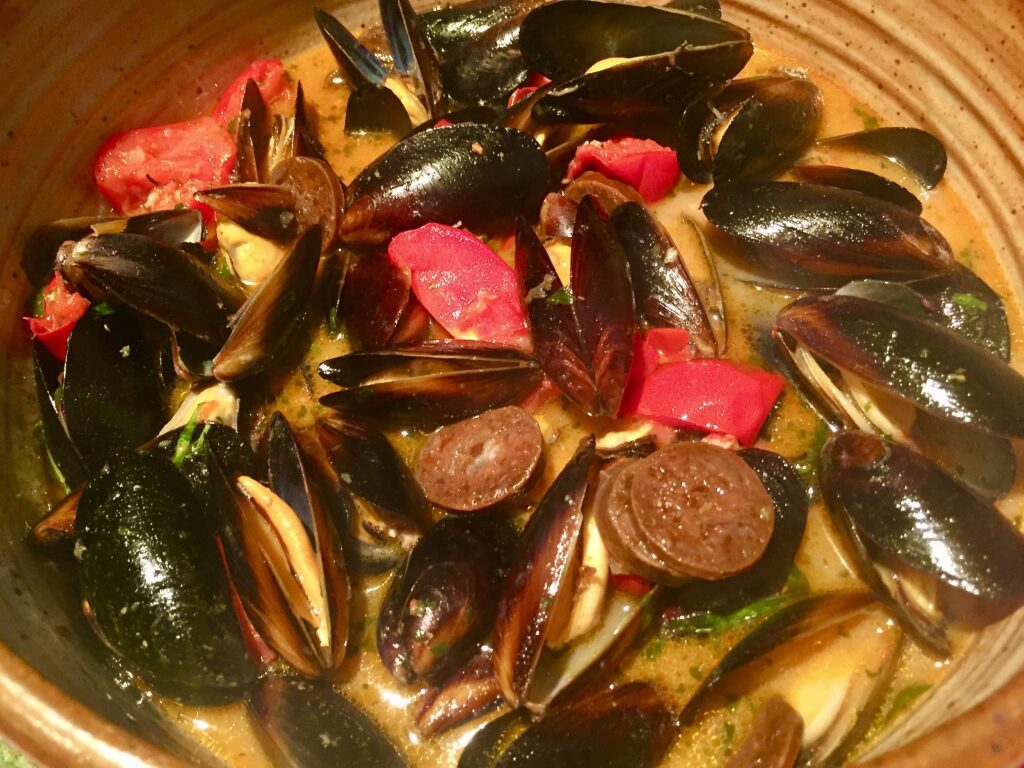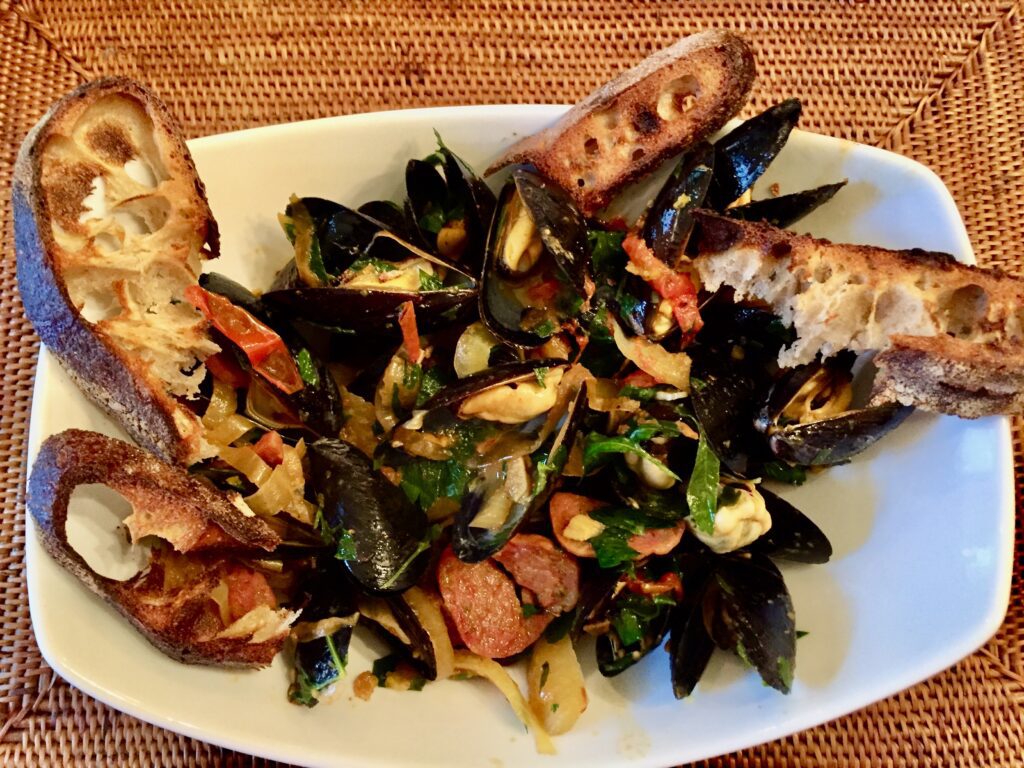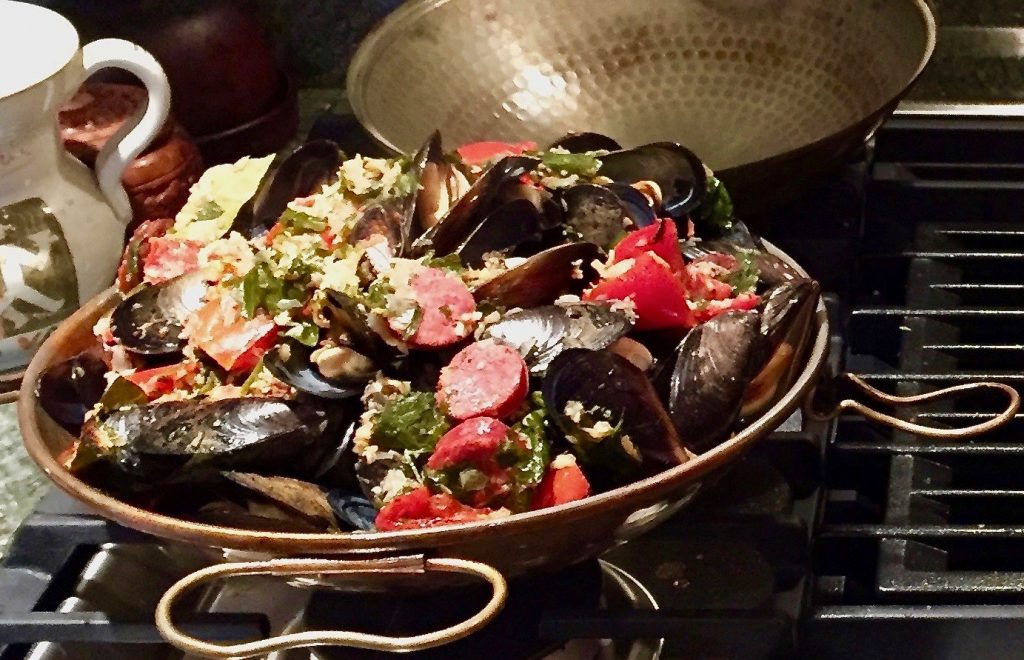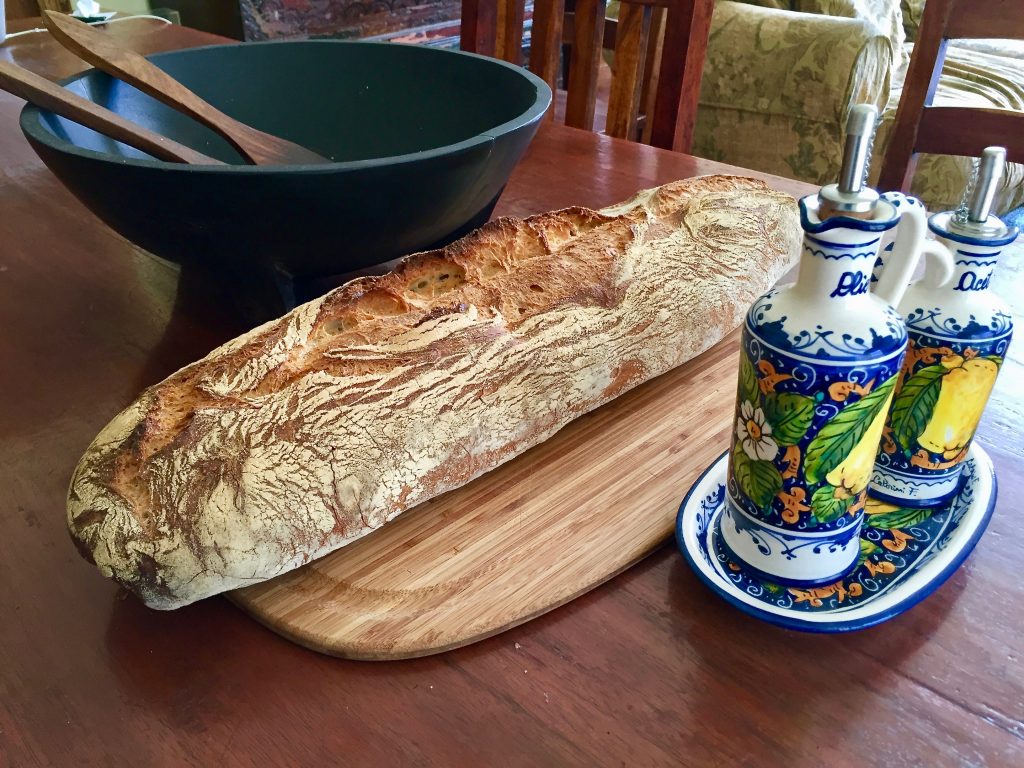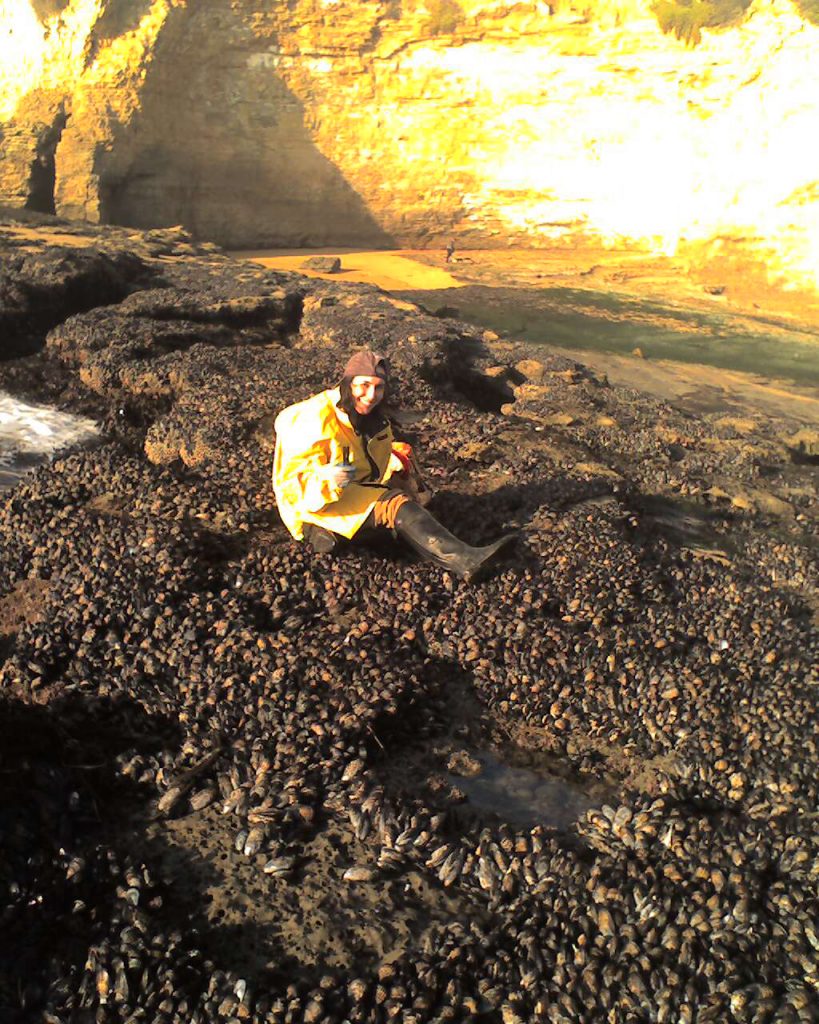
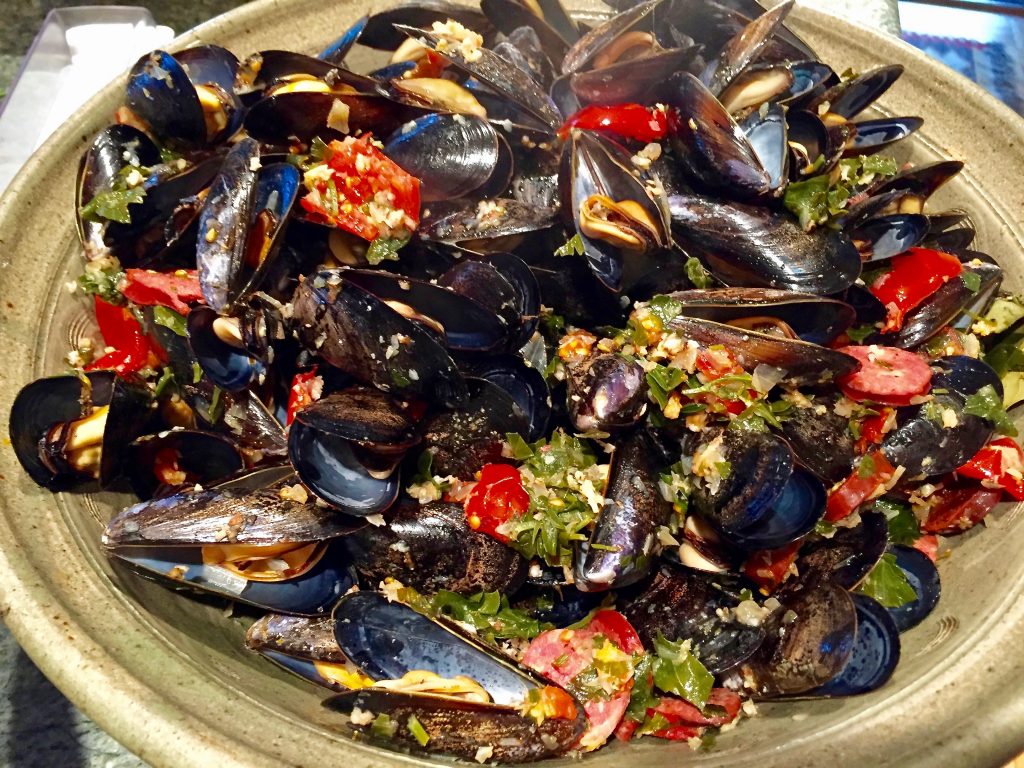
Along the coasts of Spain and Morocco, when home cooks put a big bowl of seafood on the table for a family feast, this is one of their classics. This sauce is based on our own preserved Meyer lemons along with the natural juices of the seafood, the smoky chorizo, virgin olive oil, garlic, fresh herbs like Italian parsley and cilantro, garden fresh tomatoes and the magic of saffron. Serve with crusty bread to soak up all this umami goodness and with harissa on the side.
Sometimes we steam the mussels we gather on the coastal tidal pools north of Santa Cruz in two copper Cataplana pots, which are made in Portugal. They are wonderful devices… hand hammered copper pots by Portuguese artisans. They have a tin lining inside and are held together like a clam shell with metal hinges, and they sit directly on the flame.
The history of the Cataplana is obscure, which is excellent news for me because, as a dramatist, I can tell a good story about the legendary Cataplana that feels true to the time and place it was first recorded… which is the Algarve region of Portugal… and best of all, no one knows if I made it all up or not.
In the eighth century, the Arab armies of the Caliphate crossed the Strait of Gibraltar and quickly conquered almost all of the Iberian Peninsula, and they brought with them their spicy aromatic cuisine and their cooking utensils. Taken from a word the Roman’s used when they ruled North Africa hundreds of years earlier, these peoples were eventually called the Moors. Highly sophisticated and possibly the best educated of any peoples of that era, the Moors remained in Iberia for hundreds of years and had a huge influence on the culture and the people and the lands that would one day be called Spain and Portugal.
But they especially influenced the cuisine. They brought umami bombs… pickled anchovy, cane sugar, oranges and lemons, saffron and aromatic spices, rice and savory fruits, and they brought the Cataplana.
The most southern of the regions of Portugal is Algarve, and this region still reflects a great deal of the Moorish way of cooking. The conquering armies of Arabs from North Africa, especially the soldiers’ families from Morocco, had used Tagines to cook for centuries.
But an army on the move cannot carry heavy fragile conical clay shaped Tagines, so they created the Cataplana. A space ship shaped cooking vessel, the Cataplana is hand hammered out of copper, a metal in use for thousands of years. The Cataplana uses the same principle of cooking as the Tagine, where the meats and vegetables and fruits simmer in their own steamed juices, directly on the fire. But the Cataplana were light and easy to carry… you simply slide out the hinge, place one clam shell into the other, and carry it with your gear or saddlebag.
And they are used in Algarve to this day, still made by hand of pounded copper, and they are a central part of this great feast. And they are gorgeous.
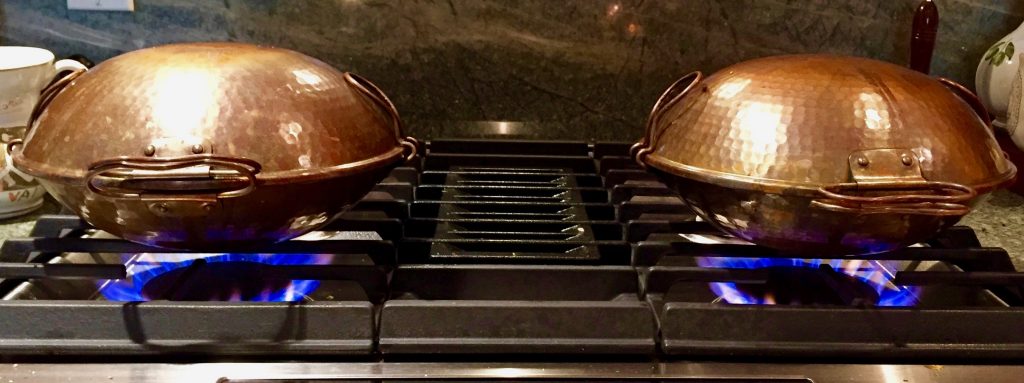
Just as the Moors did in ancient times, we place the mussels and shellfish inside the pans with sausages, garlic, vegetables, onions and wine… and it all cooks together in their own steamed juices. You can then open this flying mussel saucer and serve directly on the table in the Cataplana itself, it’s so beautiful.
The juices that are left after the mussels and clams are eaten make a fabulous base for tomorrow’s seafood pasta, like the lobster pasta in our new cookbook.
Also see our recipes for Paella and Moroccan Tagine… two more feasts that find their roots and their savory soul mates in the Moors that conquered Iberia.
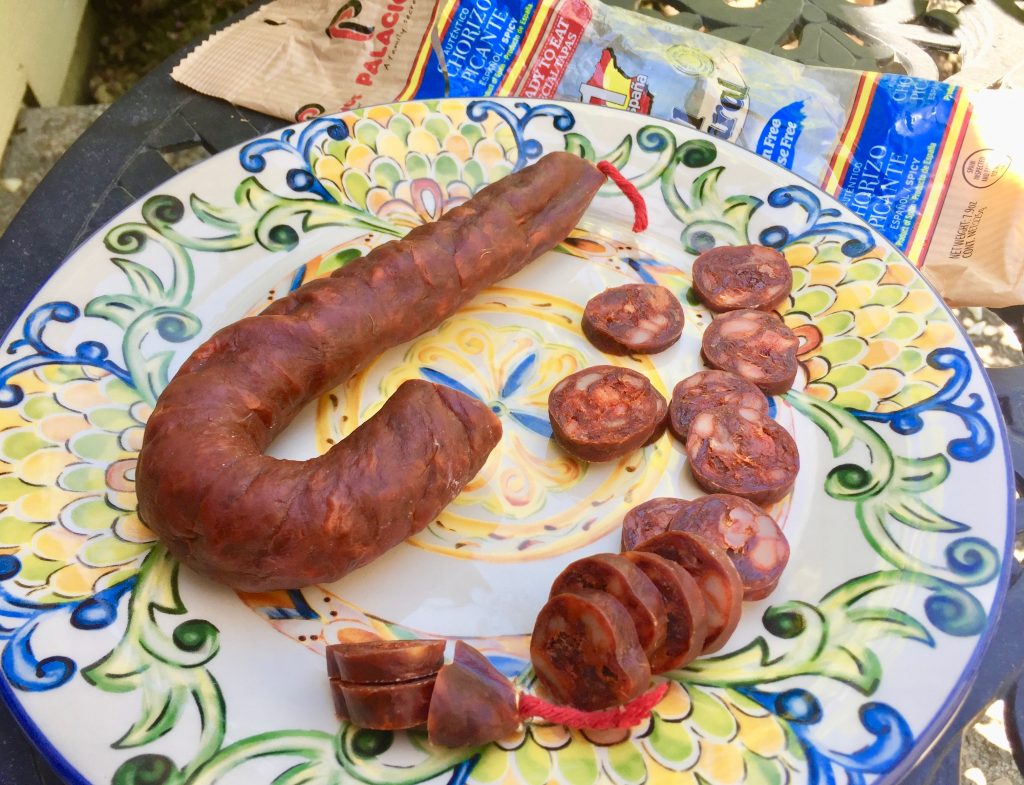
Authentic Spanish chorizo adds a very unique paprika flavor to this feast, a deep umami gravitas found in so many meals from Spain and Portugal. It’s available on Amazon and quality local stores.
Ingredients for two 10 inch wide Cataplanas
4 dozen mussels
1/2 pound smoked Spanish chorizo, cut into thick coins, (You can also use Portuguese linguica, Italian sausage, or smoked Andouille sausage, for a little Cajun/Portuguese mash up. These two cuisines were probably separated at birth anyway, since both have a very high coolness factor and a history of spicy umami.)
2 shallots, finally chopped, or use a food processor
6 big garlic cloves, crushed
1 cup white wine (we like Chardonnay)
1 cup Italian parsley, chopped roughly
6 to 8 small fresh tomatoes, or 4 medium sized, (we like thick fleshed like Campari or Early Girl), chopped roughly or 1/2 of a 48 oz can of Italian plum tomatoes (we use San Marzano tomatoes from Italbrand)
1/4 cup olive oil
1/4 cup butter
1 lemon, squeezed
1/2 teaspoon paprika (only if you don’t have real Spanish chorizo)
2 dried Bay leaves
salt and pepper to taste, (you won’t need much, the shellfish supply natural sea salt)
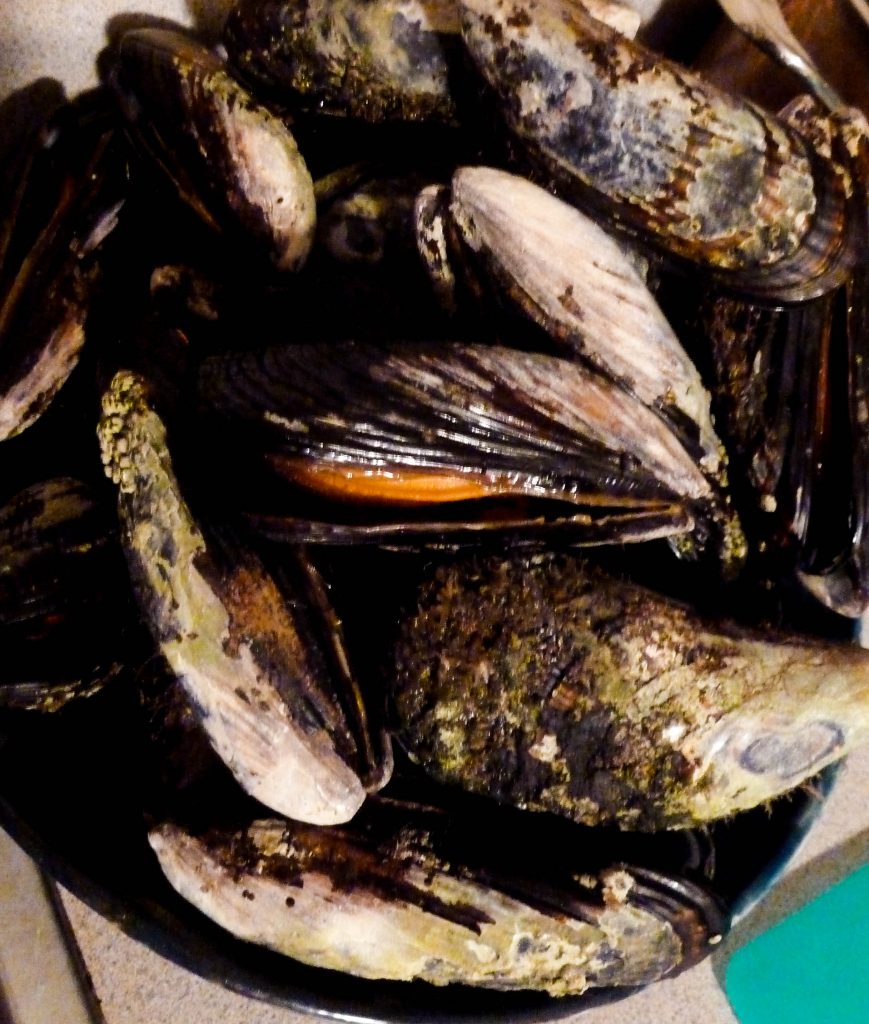
Cooking
In a 12 to 13 inch pan, saute´ shallots and garlic in olive oil until aromatic, add wine and reduce by a 1/2. Add butter and lemon juice and simmer for 1 minute.
Add chopped fresh tomatoes, paprika (if you don’t have chorizo) and Italian parsley and simmer for 1 minute.
In a separate pan, gently fry the chorizo/sausage until slightly browned. Add chorizo AND the now red oils to the wine and shallot sauce, as well as the Bay leaves.
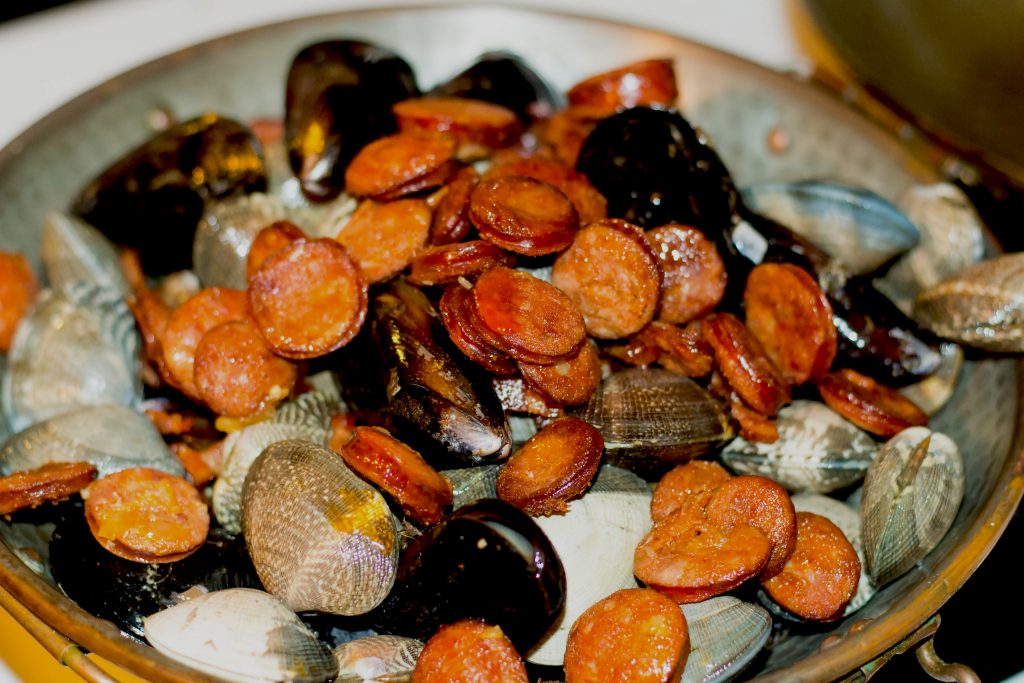
Equally divide seafood between the two 10 inch Cataplana pans and pour the sauce over them. Heat until steam first begins to escape and then simmer for another 3 to 4 minutes.
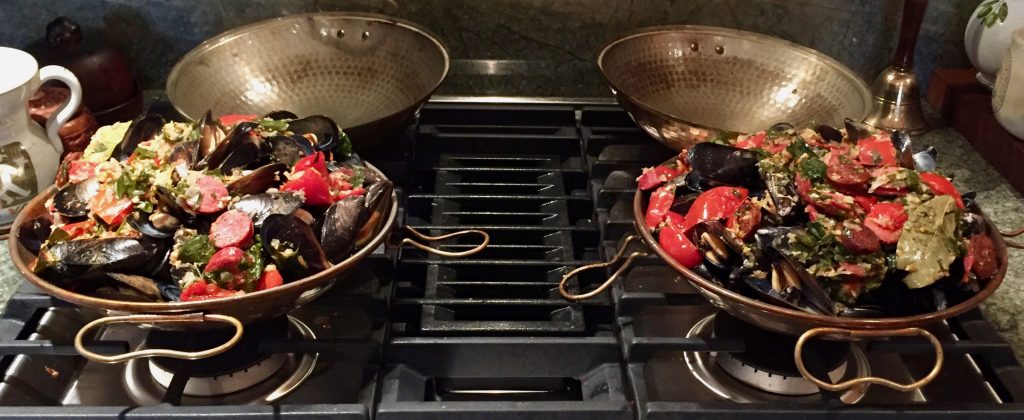
Serve in a huge bowl with thick baguette slices, toasted until crispy. Your family and friends can use this airy crusty toast to soak up the incredible broth.
